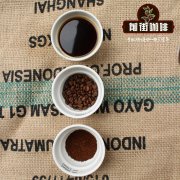Colombia coffee origin is where the orange coffee hand brewed flavor characteristics

Professional coffee knowledge exchange more coffee bean information please follow the coffee workshop (Wechat official account cafe_style)
Qianjie-Columbia producing area, Huilan Coffee brewing sharing
Antioquia: Antioquia, located in north-central Colombia, is the second largest coffee producing region in Colombia, second only to Huila province.
Santander: Santander coffee beans, with a unique fresh vegetation flavor, a long aftertaste, strong flavor.
Tolima: Tolima is adjacent to Cauca and Huilan, with an average elevation of about 1500m, in a cooperative way.
Cauca: the province of Cauca, Cauca department, whose name comes from the Cauca River, Cauca River, is a certified coffee producing area in Colombia.
Huilan: Colombia Huilan, also do "Huilan", "Huila" and so on, is the existence of Colombian coffee king, is recognized as the best balanced coffee.
Na Linglong: na Linglong province is closer to the equator, about one degree north latitude, full of light throughout the year, small but full bean shape, green color.
Colombia Huila
Huilan, Colombia
Producing area: Huilan
Altitude: 1500-1800
Variety: Caturra Kaddura
Treatment: washing
Recommended cooking method: hand flushing
Filter cup: KONO filter cup
Water temperature: 86 ℃
Amount of powder: 15g
Powder / water ratio: 1:15
Degree of grinding: medium fine grinding (BG 6S: 45% pass rate of Chinese standard No. 20 screen)
Cooking technique: stage-by-stage extraction
Steam with 30 grams of water, the steaming time is about 36 seconds, the small flow center is injected with 95 grams of water around the circle, that is, 125 grams of water is divided into sections, and so the water level drop is about to expose the powder bed, continue to inject water to the end of 227 grams, remove the filter cup when the water level drop is about to expose the powder bed, (the time of steaming starts) the extraction time is 2 grams 39 percent 00 ".
Flavor: the whole is well balanced, with obvious sweetness, dark chocolate, nuts and caramel in the mouth, and a soft acidity under the change of temperature.
Knowledge gift: Huilan area belongs to the mountain terrain, and coffee is planted on the slopes of the canyon, so it has a high altitude and suitable temperature for growing high-quality Arabica beans.
END
Important Notice :
前街咖啡 FrontStreet Coffee has moved to new addredd:
FrontStreet Coffee Address: 315,Donghua East Road,GuangZhou
Tel:020 38364473
- Prev

What are the famous Colombian coffee? how to brew Colombian coffee and share it?
Professional coffee knowledge exchange more coffee bean information please follow the coffee workshop (Wechat official account cafe_style) in front of the street-Colombia-Isabella brew to share the Colombian coffee flavor balance, has a more smooth taste, like a gentleman in coffee, decent. He has a wide range of producing areas, including Medellin, Armenia and Manizares.
- Next

What is the flavor of Colombian alcoholic coffee? how long can freshly roasted coffee beans be preserved?
Professional coffee knowledge exchange more coffee bean information please pay attention to Coffee Workshop (Wechat official account cafe_style) front street-Colombia San Jose, fresh coffee preservation knowledge sharing this bean is Colombia San Jose Manor using exquisite water washing rum barrel fermentation treatment, exquisite water washing rum barrel fermented coffee is selected out of about 17, 18 purpose Castillo varieties.
Related
- Beginners will see the "Coffee pull flower" guide!
- What is the difference between ice blog purified milk and ordinary milk coffee?
- Why is the Philippines the largest producer of crops in Liberia?
- For coffee extraction, should the fine powder be retained?
- How does extracted espresso fill pressed powder? How much strength does it take to press the powder?
- How to make jasmine cold extract coffee? Is the jasmine + latte good?
- Will this little toy really make the coffee taste better? How does Lily Drip affect coffee extraction?
- Will the action of slapping the filter cup also affect coffee extraction?
- What's the difference between powder-to-water ratio and powder-to-liquid ratio?
- What is the Ethiopian local species? What does it have to do with Heirloom native species?

